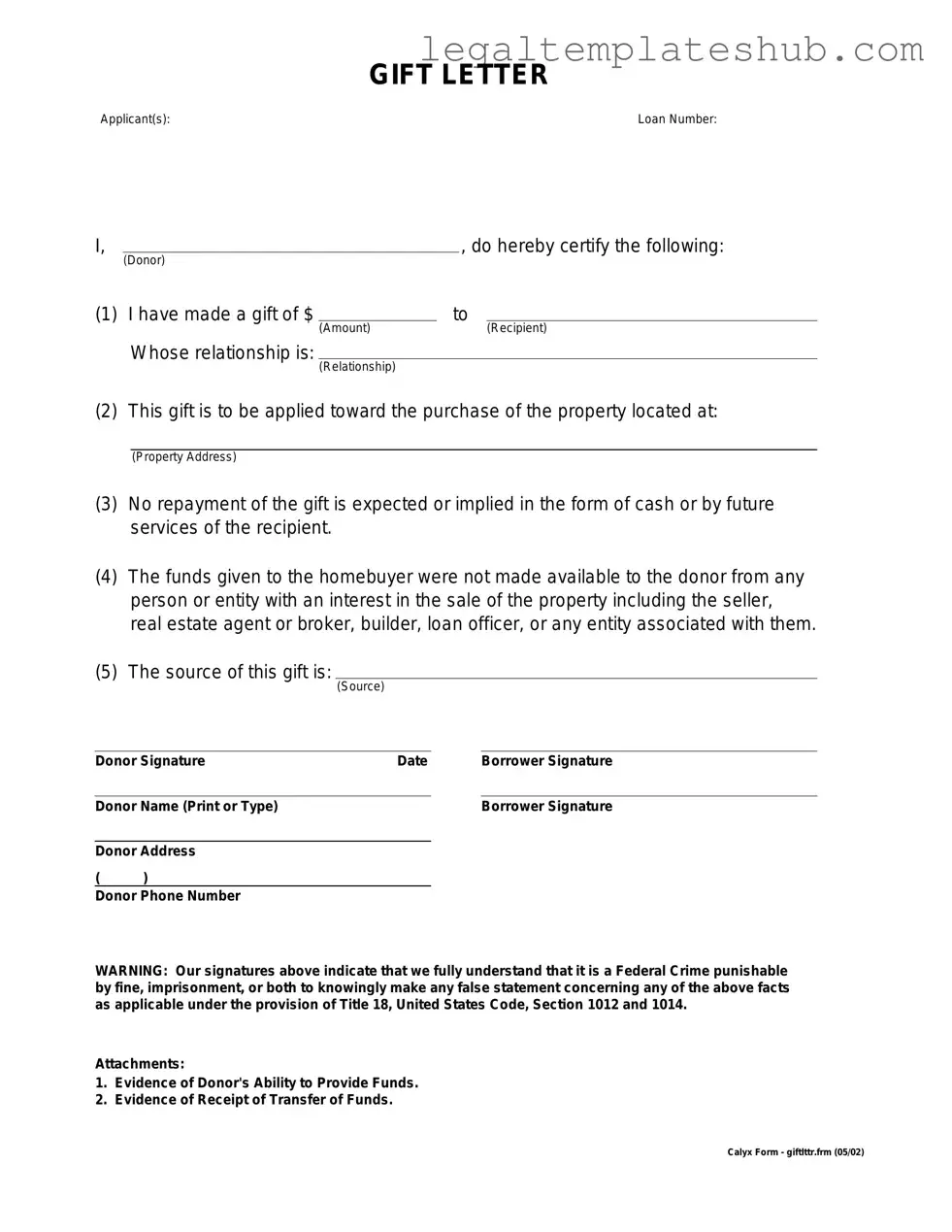Blank Gift Letter PDF Form
A Gift Letter is a document used to confirm that a monetary gift has been given to an individual, often for purposes such as purchasing a home. This form outlines the details of the gift, ensuring that there are no expectations of repayment. Understanding how to properly complete this form is essential for both the giver and recipient to avoid any complications.
Ready to fill out your Gift Letter form? Click the button below to get started!
Access Editor
